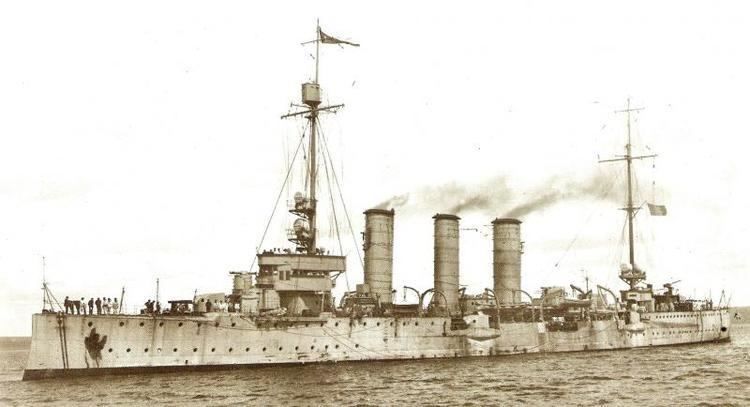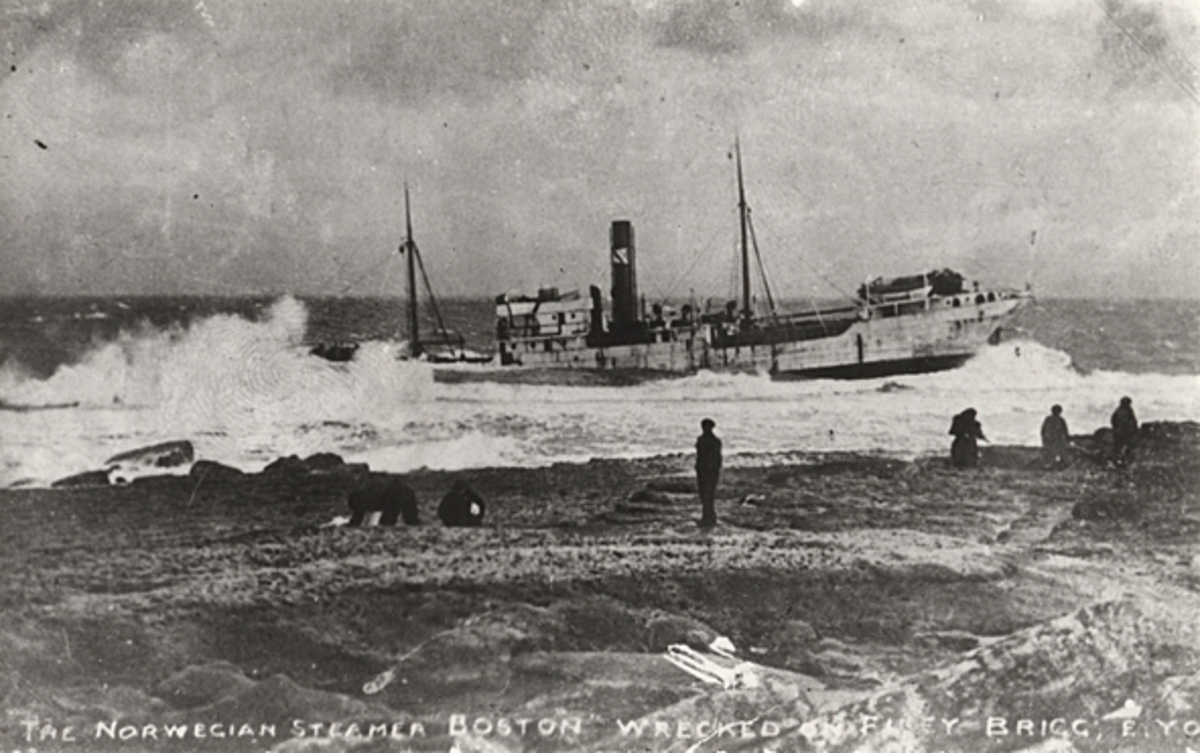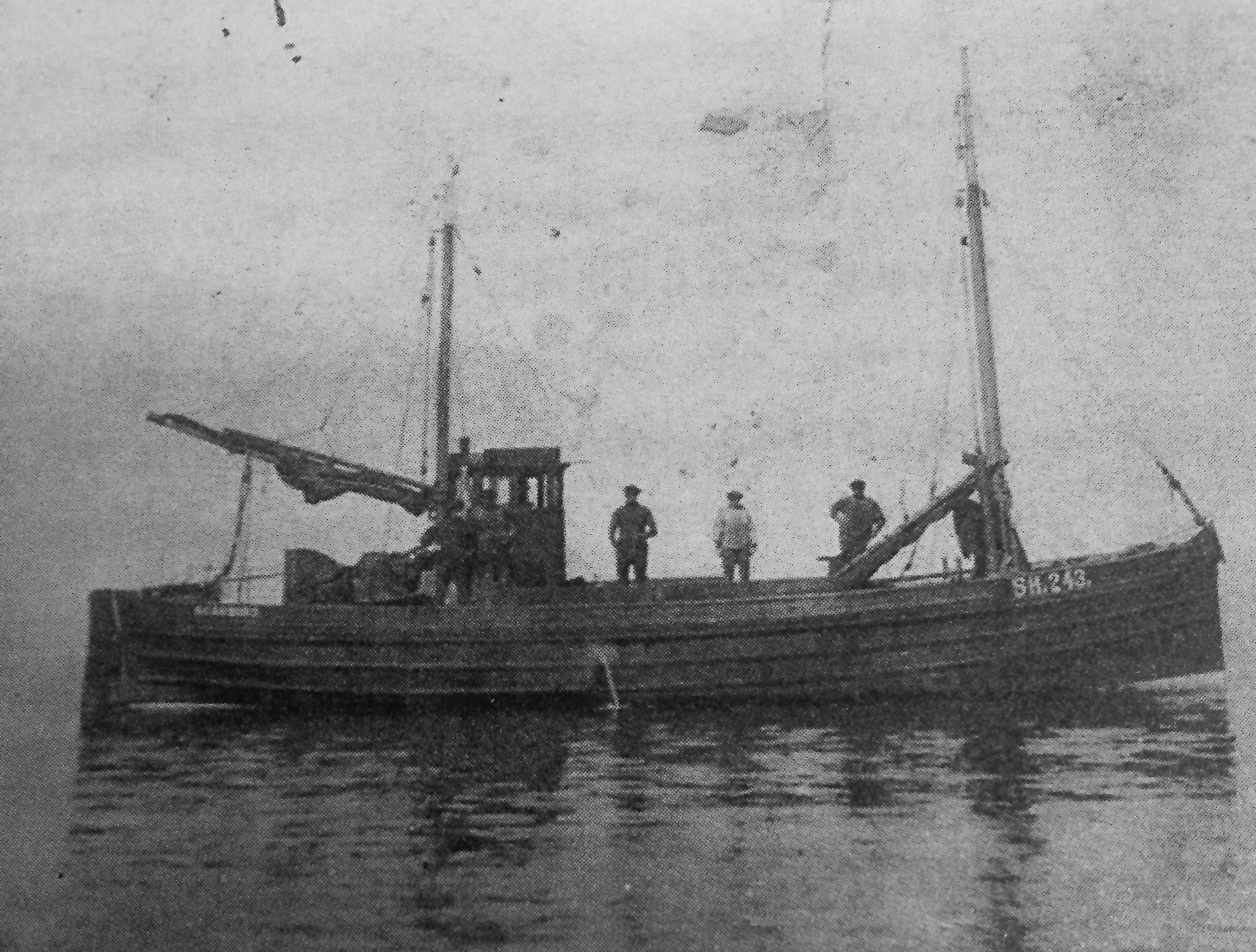Dec-2020
‘Remember Scarborough’, but who now remembers the mines of Filey Bay?
The dramatic of bombardment of Scarborough by German battlecruisers on 16 December 1914 is one of the iconic moments of the Great War. In its immediate wake, posters implored potential recruits to ‘Remember Scarborough’. Over a century on the bombardment lingers in our cultural memory. It is therefore understandable that an operation that was an integral, albeit less spectacular, part of the bombardment, has been almost forgotten.
While the German battlecruisers fired on Scarborough, the light cruiser, SMS Kolberg, headed south into Filey Bay to begin laying one hundred mines. The Kolberg’s orders were to lay ‘seal a gap’ between two British minefields and thereby impede coastal traffic. The chart of the Kolberg shows part of the minefield was sown as close in as 300 yards of the shoreline between Cayton Bay and Carr Naze at Filey. As well as interdicting merchant shipping, the minefield also placed a barrier between the bombarding German fleet and any Royal Navy ships of the Humber and Harwich flotillas that might be dispatched as a reaction to the raid. The effectiveness of the minefield is testament to the thorough planning that went into the raid. The detail is impressive, they were even aware of the ‘flight shed’ at Flat Cliffs in Filey Bay and the possible danger that might pose.

The German cruiser SMS Kolberg
As the streets of Scarborough were cleared of rubble and the dead counted, out at sea a hidden danger began to reveal itself. Around 6pm the 1,228 ton collier Elterwater, sailing from Newcastle to London with a cargo of coal, became the Kolberg’s first victim when she struck a mine three miles off Scarborough. The explosion ripped a hole in the ship’s port side near the engine room. The ship heeled over and went down by the stern in three minutes. Such was the rapidity of the sinking that there was no time to launch the lifeboats.
From that point on ships began to sink with a grim regularity. Although the numbers are open to debate, at the highest estimate 108 sailors were killed and twenty-one ships were sank as a result of the Kolberg’s mines.
Perhaps the most dramatic incident during that period came on 22 December 1914, when at 4am in the morning the Norwegian flagged cargo ship Boston, en route from Drammen to London with a cargo of wood, struck one, or possibly two mines, three miles east of Scarborough. The cargo of wood helped keep the ship afloat. The 1,168 ton vessel drifted south before running aground on Filey Brigg. The crew took to the ship’s lifeboats, nine were picked up and landed at Scarborough, while the captain, the second mate and eight other crewmen were picked up by the Filey lifeboat, Hollon the Third. They were landed at Filey and were accommodated at the Foords Hotel on Queen Street.

The Boston aground on Filey Brigg
A huge minesweeping operation accounted for sixty-nine of the Kolberg’s mines, the operation was called off in April 1915, but the grim harvest continued. In May of that year the Scarborough trawler Condor was fishing off Cloughton when four other trawlers heard a loud explosion. No trace of the vessel was found until the body of the skipper was washed ashore at Speeton in Filey Bay. An inquest concluded that it was probable that a mine had become caught within the nets of the trawler and it had then exploded upon coming into contact with the vessel, thus causing its total loss.
Despite the fact that the Great War ended on 11 November 1918, mines continued to take a toll on shipping around the British Isles. One more of the Kolberg’s mines awaited a victim. Five months after the end of the First World War the steam drifter Emulator was decommissioned from Royal Navy service at Grimsby. She had only been at Scarborough a few days when she was taken to sea by a seven strong crew of Filey fishermen.
The Emulator was in the fishing grounds off Scarborough when she struck a mine at 9.35pm on 15 April 1919. Two vessels fishing near the Emulator, the Fear Not and Tryphena, searched for survivors, but in the darkness no trace of the men or wreckage was found. It was presumed that all seven men had gone down with the ship. It was a tragedy that was felt particularly keenly among the tight fishing community of Filey. Many of the crew were family members, including a father and two sons. Astonishingly, there would have been another father with two sons on board, but William Jenkinson’s son had not been demobilised as quickly as was expected from the Royal Navy and thus missed the sailing. One of the crewmen, Richard Jenkinson, has recently returned from Royal Navy service having skippered a minesweeper in the Mediterranean.
Although the Emulator disaster was attributed to a mine from the Kolberg, it is impossible to know for certain, there were also large British minefields that were swept after the war, but it is possible that individual mines slipped their moorings. Whatever the cause, the loss of the Emulator is probably the greatest tragedy to have over come Filey. The men who died on the terrible day are listed below and we dedicate this page to their lives:
Richard Cowling, aged 48, Filey
Matthew Crimlisk, skipper, aged 47, Filey
Thomas Crimlisk, aged 17, Filey
Wilfred Crimlisk, aged 20, Filey
Richard Jenkinson, aged 26, Filey
Thomas Jenkinson, aged 16, Filey
William Jenkinson, aged 44, Filey

The Emulator, lost with all hands on 15 April 1919

comment this post